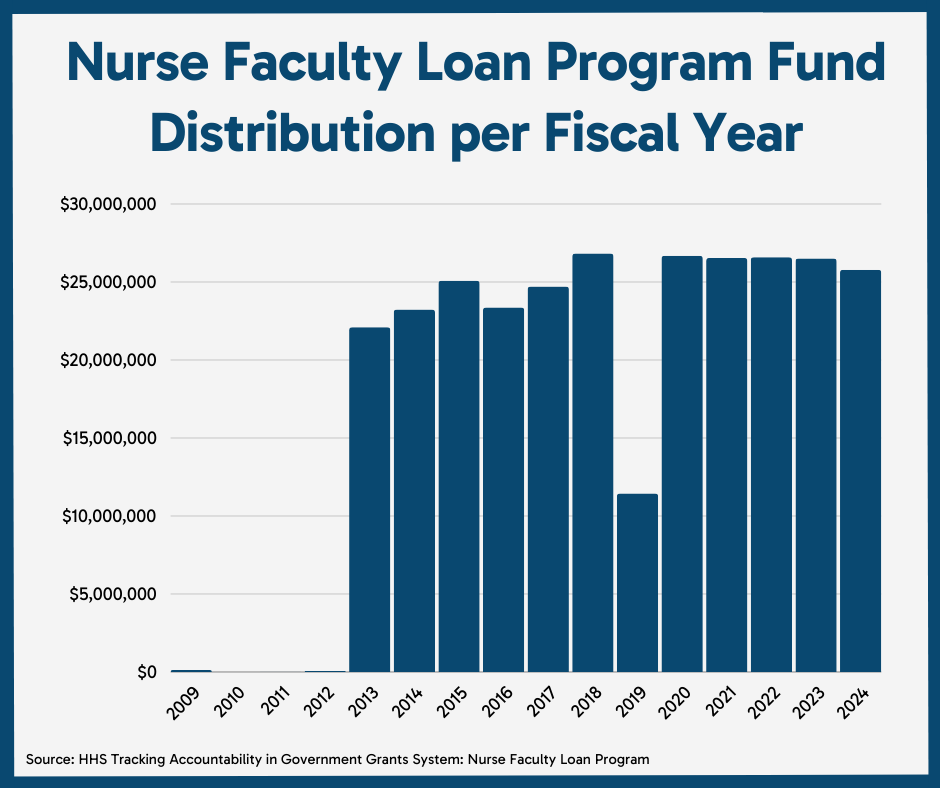The State of Nurse Faculty
There are nearly 73,000 nursing instructors and teachers in a postsecondary role, as of May 2023, according to the U.S. Bureau of Labor Statistics. Of those, the majority work at a college, university, or professional school with an annual mean wage of nearly $87,000.
The American Association of Colleges of Nursing reported that in the 2023-24 academic year, more than 65,000 students were rejected from nursing schools because of an “insufficient number of faculty, clinical sites, classroom space, clinical preceptors, and budget constraints.”
Faculty age, a wave of retirements, and higher compensation in other settings were named as contributing factors to the faculty shortage.
In addition to government programs like NFLP, some states are instituting tax incentives to increase their nurse educator population, while nursing schools are forming academic-practice partnerships, according to AACN.
Nurse educators who spoke to Becker’s Hospital Review confirmed the value of academic-practice partnerships. However, Mary Ellen Glasgow, PhD, RN, dean and nursing professor at Duquesne University, also highlighted the NFLP initiative.
“We need to look at ways to pay for nurses to go back and become nurse faculty, whether it’s a nurse corps like [Health Resources and Services Administration] has, or expanding Nurse Faculty Loan repayments and ways to fund that,” Glasgow said. “I think we need to really look at the workload and then sell the role of becoming a nurse educator to other nurses. There’s such a nursing shortage, at least on the East Coast here, that some hospitals have nurse vacancies as high as 30%. We need nurse educators and nurses at the bedside. We need to look at ways to have funding from the Centers of Medicare, maybe to fund preceptors and funding for people to teach nursing students.”
Impact of the Nurse Faculty Loan Program
Nearly $299 million has been awarded through the NFLP since fiscal year 2008, according to HHS’s Tracking Accountability in Government Grants System (TAGGS).
When broken down by funding FY, the lowest amount issued was in 2009 at $112,338, compared to 2024, which saw upwards of $25 million awarded.

The NFLP FY 24 recipients received anywhere from $16,666 to $2.2 million, according to preliminary data.
When the University of Mobile (Alabama) School of Nursing announced in July 2023 that it had been awarded NFLP funds, Dr. Jessica Garner, the school’s graduate dean, said the program is a “great incentive” for nurses who want to become educators.
The program also has shown promise in reducing the nurse educator vacancy rate, according to an HRSA analysis of the program that looked at academic years 2015-20.
“During this five-year period, NFLP nursing faculty graduates reduced the national vacancy rate of full-time nurse faculty by almost 2%, from 9% to 7%,” the report stated.










